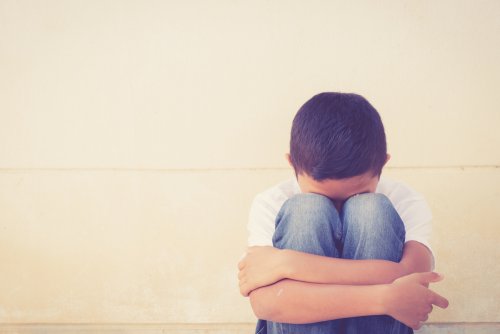Dominance and Submission in School Bullying

The dynamics of dominance and submission in the context of school bullying perfectly explain the imbalance that exists between bullies and their victims. This is a key element when it comes to determining whether an episode of violence between students can be considered bullying or not.
So, any time that bullying takes place at school, victims feel weak, defenceless, and vulnerable. At the same time, their attackers feel strong and powerful.
“School bullies maintain a pattern of dominance, oppression, and abuse, submitting their victims to fear and isolation.
Dynamics of dominance and submission in the context of school bullying
An imbalance of physical, social, or psychological power between the victim and the aggressor is a determining factor in an episode of school bullying. In other words, the victim isn’t in the same conditions to be able to defend him or herself from continuous attacks. It’s a situation of inequality and defencelessness on the part of the victim .
We can explain this in terms of a scheme of dominance and submission. Here, the bully attributes a series of characteristics to his or her victim, such as:
- Weakness.
- Scarce social abilities.
- Blame for his or her own weaknesses.

And, at the same time, the victim attributes the following characteristics to his or her aggressor:
- Arrogance.
- Ample social abilities.
- Power.
- Invulnerability.
This allows for the maintenance of a certain misunderstanding regarding the vulnerability of the victim and the impunity of the aggressor, which allows the abuse to continue. However, the phenomenon of bullying doesn’t consist of a bilateral relationship, but rather a trilateral relationship. In other words, three different parties participate in the dynamic:
- Victims.
- Aggressors.
- Witnesses.
In this sense, all three individuals or groups interact with one another in a positive or negative way. A code of silence and the public condemnation of any tattlers or informants maintains this trilateral relationship.
The relationships that develop within the scheme of dominance and submission
Within the scheme of dominance and submission in the context of school bullying creates the following relationships:
- Victim-aggressor. Among these two individuals, a relationship of dominance and submission develops.
- Witness-victim. This relationship develops when spectators break the power imbalance that exists when bullying takes place. In this case, witnesses act in defense of the victim, rejecting the violence that the aggressor and his or her accomplices exercise.
- Witness-aggressor. In this case, a toxic and negative bond develops between these two agents. That’s because, in one way or another, the witnesses support the power imbalance. Therefore, classmates assume one of the following roles:
- Reinforcers: By remaining silent and reacting passively to the situation, they express their approval and reinforce the actions of the bully.
- Assistants: When witnesses and aggressors come together and carry out harmful and abusive acts toward the victim.

The role of schools in the scheme of dominance and submission
Many times, schools and educators make certain mistakes when it comes to dealing with school bullying:
- Minimizing the significance of the school bullying phenomenon.
- Maintaining a passive attitude when it comes to bullying and its prevention.
- Not putting into practice programs that promote respect and support diversity.
- Not making an effort to encourage a climate of peace and cooperation within the classroom.
The truth is, schools can keep the dynamics of dominance and submission among students from developing. To do so, they must turn away from traditional teaching methodologies and set their sights on more innovative approaches. As a result, not only will they develop academic competencies, they’ll also educate children in emotional education.
Therefore, the educational system bears the responsibility of developing the following values among the student body:
- Empathy.
- Self-control.
- Responsible decision making.
- Assertiveness.
- Social abilities and communication.
- Problem-solving through negotiation and mediation.
“Education is the vaccine for violence”.
– Benjamin Franklin –
All cited sources were thoroughly reviewed by our team to ensure their quality, reliability, currency, and validity. The bibliography of this article was considered reliable and of academic or scientific accuracy.
- Betancourt, A. (2014). Prevención del acoso escolar: Bullying y Ciberbullying. Costa Rica: Instituto Interamericano de Derechos Humanos.
- Garaigordobil, M. (2011). El maltrato entre iguales: definición, prevalencia, consecuencias, identificación e intervención. San Sebastián: Universidad del País Vasco.
- Ortega, R. y Mora-Merchán, J. A. (2008). Las redes de iguales y el fenómeno del acoso escolar: explorando el esquema dominio-sumisión. Infancia y aprendizaje, 31(4), 515-528.